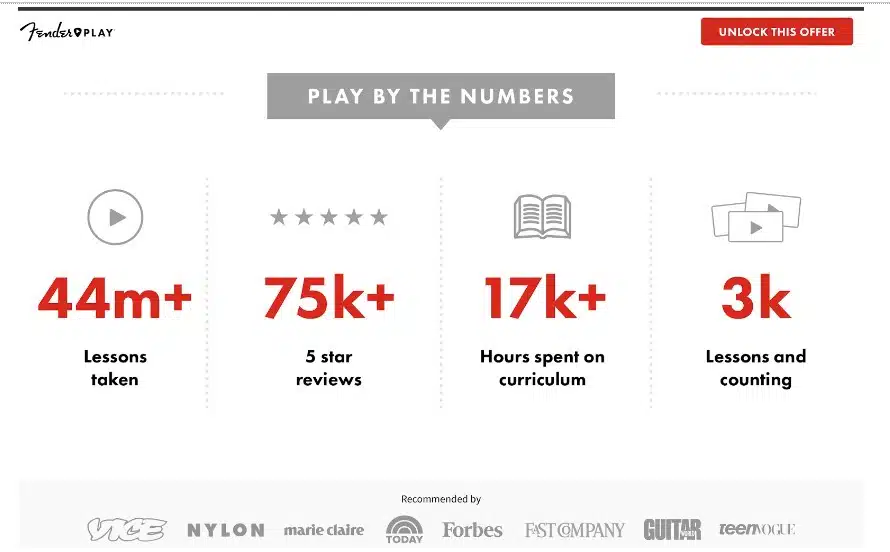Have you ever watched a movie because lots of other people praised it? We all have, at some point or another. If many people are doing something, it must be great, right?
Well, this is what social proof is all about. From a marketing POV, it provides evidence of the popularity or usability of a brand among consumers. This can greatly influence purchasing decisions.
According to a study by PowerReviews, 99.9 percent of customers read reviews when shopping online. This strongly suggests that people depend on others’ opinions to determine whether a product or service is worth purchasing.
This article will explore the concept of social proof and provide actionable strategies for enhancing brand trust and driving more sales.
Why social proof matters for businesses
Social proof can heavily influence prospects’ decisions and make them choose your product over your competitors. Here are some evidence with statistics:
- Websites with customer reviews have a higher conversion rate (67 percent) than websites that don’t feature customer reviews
- 83 percent of Americans are more likely to purchase a product or service if they are recommended by a friend or relative
- 77 percent of people say that watching a testimonial video helped convince them to buy a product or service
Let’s understand the two primary reasons behind it:
1) Psychological impact on purchasing decisions
The psychology of social proof lies in our tendency to look to others for guidance when we are uncertain. It revolves around three key aspects:
- Conformity: Fitting in and following the crowd to gain acceptance
- Belonging: Talking action when things align with their values and beliefs
- Trust: Trusting the opinions of others while making decisions, especially in uncertain situations
Social proof also utilizes the principle of “FOMO”, which motivates us to follow others and make similar choices because we fear being left behind or making the wrong decision.
See how Colgate positions itself with expert recommendations to build trust among shoppers. If dentists recommend it, it must be good, right?

2) Building trust and credibility with potential customers
Social proof can help establish trust and credibility with prospects. Witnessing others having a positive experience reduces the perceived risk while increasing confidence in the brand.
Social proof is also a brilliant tool for increasing authenticity. Positive brand mentions, such as user-generated content or reviews, are seen as the most trustworthy form of content a brand can use to showcase its products.
For example, Manuka Doctor, a famous honey brand, rose to popularity when Kourtney Kardashian discussed it in a Broad City episode. Now, Kourtney is a brand ambassador for the brand, showing that a celebrity endorsement can play a major role in uplifting a brand’s image and sales.

How To Use Social Proof To Elevate Your Brand Trust And Increase Sales
Take a look at our tried and tested tips to use social proof strategically in your campaign :
1) Leveraging real-time customer feedback
Showing genuine reviews and testimonials from satisfied customers can give your brand an authentic image. Continuous customer feedback lets you monitor your business performance and understand real-time customer sentiments. Moreover, studies show that 69% of consumers would buy from a business if its written reviews describe positive experiences.
For example, Uber uses in-app feedback to allow drivers and customers to request real-time feedback. Customers rate their drivers, and drivers rate their customers.
Drivers rated below a certain average are asked to improve their service. Drivers with higher ratings are trusted by customers as someone safe, thereby increasing the credibility of drivers and users’ convenience.

Conducting an SEO audit can also help optimize how these reviews are presented on your website, ensuring that they reach and resonate with your target audience effectively.
2) Integrating social proof into the customer journey
To win customers, you must know how to strategically utilize social proof in each customer journey stage. As a marketer, you must first understand the user journey, map it out, and then integrate social proof to deliver the right content at the right time and place.
Here is how you can do it:
- Awareness stage: Use social proof in advertising, like showcasing customer testimonials in your Facebook ads and Google retargeting ads to attract prospects
- Consideration stage: Use social proof on your website or email marketing to engage prospects. For example, you can include testimonials, reviews, and ratings in your email marketing using platforms like Mailchimp and Mailchimp alternatives.
- Decision stage: Use social proof in your checkout process to encourage conversions. For example, Lush Cosmetics features its products with customer ratings and a link to customer reviews. You can also scroll down the product page to see written reviews from real customers, plus a visual UGC gallery with photos of satisfied customers flaunting their masks. This provides a gentle nudge to the customers to act and buy the product.

3) Showcasing success stories with detailed metrics
Data is a powerful form of evidence. Numbers can showcase powerful forms of credibility and differentiation, and when they are related to the results of your work, they become social proof.
Fender Play, a guitar brand, utilizes social proof well by displaying growth numbers and success metrics to sell its guitar learning course.
The metrics displayed on the landing page give the impression to the visitor that many people are taking the lessons and rating them highly. This means it offers great classes that are worth taking, urging more people to utilize the services.

4) Leveraging industry expert endorsements and partnerships
We live in the digital age where social media marketing is vital for brands to grow and succeed. Influencer marketing is among the most important new marketing trends. When people we know admire and look up uses or talk about using a specific product or service, we tend to do the same.
According to research by Matter, 69 percent of respondents said they are likely to trust an influencer’s recommendation over direct or loud marketing from a brand.
Joybird collaborated with content creator Chrissa Sparkles to promote the Barbie Dreamhouse furniture collection, where the influencer created content at Joybird’s showroom.
She was a perfect fit for the collaboration because she embodies the core traits associated with Barbie. And guess what? The collaboration was a massive hit. It felt more authentic and organic as the influencer naturally aligned with the brand’s values and traits.
Always try to collaborate with influencers or celebrities who genuinely care about and understand your products and services. This helps convey your message far more effectively as social proof.

5) Utilizing user-generated content (UGC) campaigns
UGC can help you expand your reach and visibility while enhancing credibility by showing that real people love and vouch for your brands, products, or services.
Here is how you can use UGC:
- Motivate your audience to create content around your product or service by incentivizing it
- Create shareable content
- Create a campaign with a branded hashtag and encourage users to use it
- Feature UGC on your website, social media and other marketing materials
Apple’s #ShotonIPhone campaign has been around for years. It encourages consumers to take creative photos and post them with the hashtag. This campaign showcases the evolving nature of the Apple iPhone camera and the upgrades it has made over the years.
Here are the results:
- The campaign was mentioned by 24,000 opinion leaders, with 6.5 billion media impressions and 95 percent positive mentions.
- The incredible collaboration between the users and the brand led to a 90 percent brand retention.

6) Highlighting media coverage and awards
Any media coverage, certifications, or awards are visual “trust seals” that build credibility and make your business stand out. Showing prospects with the proper recognition and credentials is essential, especially in heavily regulated industries. Software, construction, architects, lawyers, and accounting firms should consider adding this social proof.
Consider these places to showcase your awards:
- On top of your homepage
- A separate awards page
- On your website’s footer
- On your landing page
Semrush does an excellent job of establishing social proof on its landing page. As you scroll down the page, you see one after one addition of social proof highlighting numbers and credible brands that use Semrush.
However, major brands using Semrush don’t firmly indicate that it’s beneficial to average users. That’s why it highlights awards for best digital tool, best SEO software suite, etc, to show the visitor that the tool is so good that it’s award-winning.

Measuring the impact of social proof on brand trust and sales
Using the social proof strategies discussed above can help you get conversions. However, it isn’t easy to pinpoint the exact factors leading to the increased conversion rates and customer engagement for your business. Below, we have mentioned a few ways to identify ways to measure and optimize social proof:
1) Setting up key performance indicators (KPIs)
You can analyze data on your social proof performance by selecting the appropriate tools and methods based on your goals. For example, with Google Analytics, you can track website traffic, conversions, and user behavior to measure how social proof affects key performance indicators (KPIs).
The first step is to set up KPIs to understand how social validation influences your performance. Here are some essential KPIs for social proof:
- Average rating score
- Number of new reviews per week or month
- Number of testimonials collected
- Number of social media mentions
- Number of shares, likes, and comments on social proof posts
- Conversion rate before and after implementing social proof
2) Using analytics to track changes in brand perception
81 percent of consumers are more likely to purchase from a brand they trust. That is why monitoring brand perception is vital for increased conversions and long-term success.
To monitor brand perception, you must identify areas for improvement and take necessary steps to address any issues that can negatively impact the brand’s image.
One way to do this is to use website analytics. You can monitor website traffic, bounce rates, and engagement metrics to understand how customers perceive your brand online. You can also use tools like Google Analytics to track these metrics and make data-driven decisions to improve your brand perception.
In addition, improving your communications with customers can also have a great impact. When tracking calls, you can use contact center sentiment analysis to understand your customers further. You can also track and monitor calls and gather relevant data to improve your services.
3) Adjusting strategies based on data insights
Now that you have all the data collected, it is time to evolve and adjust your strategies while analyzing it.
Here are a few ways to do it:
Reviews and ratings
- Highlight positive reviews on your website, social media, and other marketing materials.
- Address recurring issues mentioned in negative reviews.
Testimonials
- Identify testimonials with engagement and feature them prominently on your website and in marketing campaigns.
- Create strategies to collect more testimonials, such as follow-up emails or incentives for leaving a testimonial.
Social media
- Invest more in social media marketing if social media mentions and engagements are driving traffic.
- Regularly monitor social media sentiment and respond to positive mentions while promptly addressing negative feedback.
Final thoughts
Now that you understand the concept of social proof and its strategies, it is time to take action and amplify your marketing impact. Remember that people want validation before trusting a brand. So start promoting your brand by leveraging reviews, testimonials, UGC, and influencer endorsements, and see your business transform.



